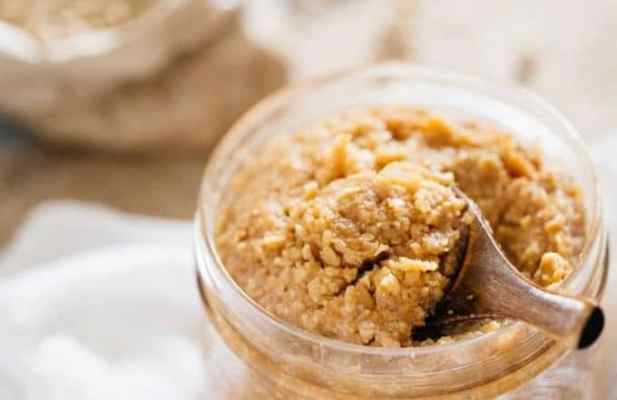FoodWage

Get To Know The Many Gut-Healthy Benefits Of Miso
Miso has started making cameos all over the place: in dressings, dips and on the grill at all the hotspots in town. If you haven’t already, it’s high time you meet this amazing super-powered condiment and make good friends. There are myriad ways to use it — in snacks, meals and menus, all year long. WHAT IS MISO? Miso is a Japanese pantry staple made from fermented soy beans. Like many fermented foods, it supports a healthy microbiome by providing our guts with good bacteria, all while delivering vitamins, minerals and a punch of umami flavor. Miso is inexpensive and easy to find in well-stocked grocery stores and Asian markets alike. It’s also easy to use. Additionally, it’s tremendously healthful. Protein-rich, full of essential minerals and vitamins K, B, E and folic acid. There are different types of miso, each with a different flavor profile. White Miso (Shiro Miso): White miso (which is actually light yellow in color) is made with fermented soy beans and rice. It’s fermented for a short period of time, which makes it more mild and sweet in taste. Since it’s the most mild kind of miso, it’s also the most versatile. If you’re buying only one miso to use in a bunch of recipes, this is the best choice. Yellow Miso (Shinshu Miso): Yellow miso is often made with fermented soybeans and barley. It’s slightly stronger than white miso, but not as strong as red. Just remember: mellow yellow. It’s light brown in color. Red Miso (Aka Miso): Red miso is the saltiest, most pungent variety. You only need a little bit to add some serious umami to your dishes. It’s typically made with fermented soybeans and barley or another grain. It ranges from dark brown to red in color. This type of miso is best suited to heartier dishes. CREATIVE USES Miso brings a bang of umami to grilled meats and vegetables, punches up dressings, makes a meal out of broths and soups and serves as a flavorful spread for sandwiches, toasts, summer rolls and flatbreads. Miso also mixes well with others; try stirring it into mashed potatoes, whipping a bit into butter and whirring it into homemade hummus. Use it just as you would another creamy condiment — say butter, mayonnaise, mustard. Add a little bit at a time, to taste. You can always add more, but you can’t take it away. HOW TO TAKE IT TO THE NEXT LEVEL? It’s not uncommon for Japanese chefs to uplevel their home-made miso by chopping up herbs, roasted vegetables or other flavor compounds to make a special sauce. This is something you can easily do at home, no matter the season. The recipe below calls for spring and summer herbs, but through the winter you can swap them out for rosemary, arugula or other sturdy, flavorful greens. Roasted mushrooms make a nice addition, too.
Ingredients for servings
-
½ cup organic white miso
-
⅔ cup olive oil
-
4 medium cloves of garlic peeled
-
2 tbsp fresh parsley
-
2 tbsp fresh parsley
-
2 bunches cilantro, leaves and stems
-
2 scallions trimmed
-
2 inch segment of ginger peeled
Get to Know The Many Gut-Healthy Benefits of Miso
Directions
Use a food processor or blender to puree all ingredients into a paste. Taste, adjust seasoning, and use to accent grilled meats and vegetables, sandwiches, potatoes and more. Makes about 2 cups